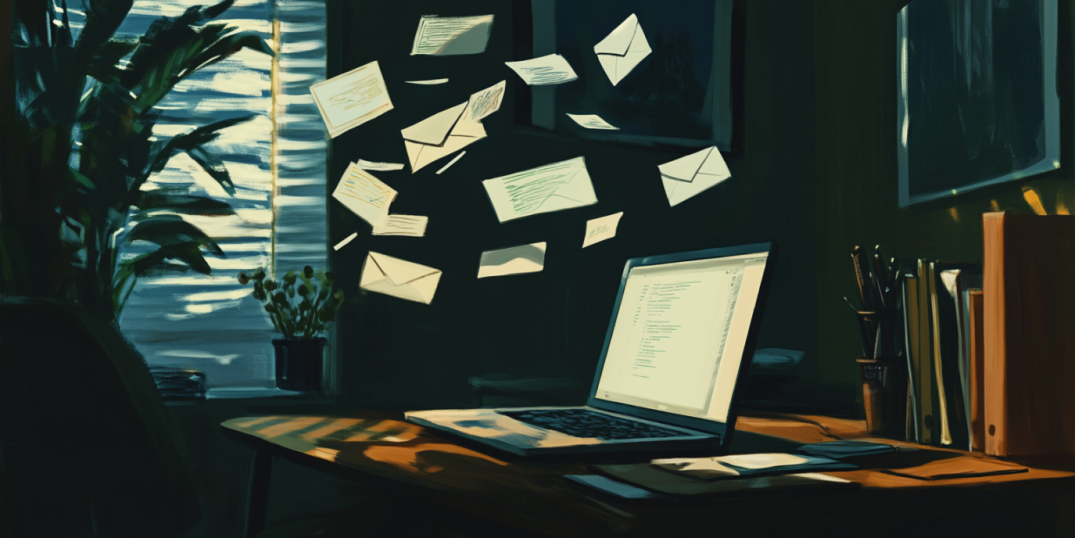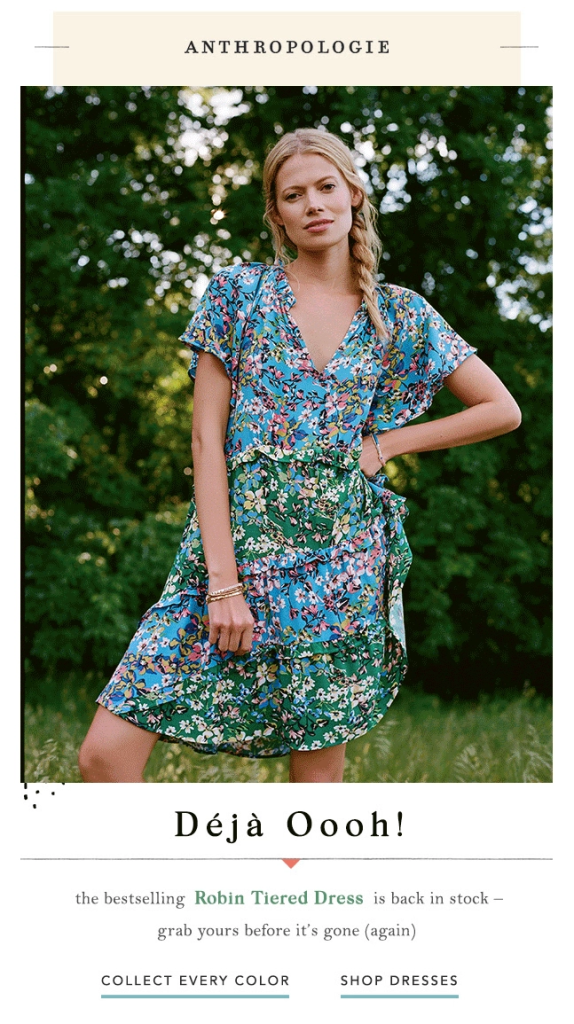- Home
- Email Templates
- E-commerce Personalization in ...

Personalization rules—you simply can’t beat it! According to Credera, a global digital marketing consulting company, emails with personalized subject lines are 26% more likely to be opened. Moreover, revenue is almost six times higher in emails that use personalization.
OK, here’s real talk: if your e-commerce emails still slap a customer’s first name at the top and call it “personalization,” it’s time for an urgent upgrade because we call it a Stone Age approach!
Undoubtedly, shoppers in 2025 would expect way more from you or your email marketing team. Customers want emails tailored specifically for their needs. When you cook it right, the magic starts: you will enjoy higher opens, more clicks, and—highly likely—skyrocketing sales!
In this review, we’ll explore true e-commerce personalization and how to use it in your email campaigns. To understand all the benefits of personalization in e-commerce, we will start with the most basic question:
What Is E-commerce Personalization?
We assume you know the answer already, but let’s formalize it anyway. Personalization in e-commerce is about using real customer data—like purchase history, browsing behavior, and preferences—to create super-relevant shopping experiences. In the offline world, it’s like being the cool sales assistant who remembers what you like every time you walk into a store.
The first personalization techniques were introduced in the late 1990s. Back in 1999, CRM companies, like Salesforce, began experimenting with inserting first names into emails. So, simple things like “Hi, Bob” were a breakthrough back then. Personalization immediately provided a competitive edge to those businesses that started using it, thanks to its personal touch. Today the “Hi, [Name]!” scheme looks rather primitive or a must-have, at least. Yet, back in the day, it felt revolutionary.
Fun fact: One of the earliest milestones in email personalization was when Amazon started making personalized email product recommendations in the early 2000s. They showed the whole marketing world how powerful “You bought this… you might like that!” could be. This technique for recommending products based on users’ behavior and preferences is called collaborative filtering. Amazon was the first company to apply it not only to its website but also to its email campaigns.
Soon, more businesses got way better at collecting customer data. Personalization has become increasingly sophisticated; for example, it has evolved to segment customers based on their behavior, preferences, and past purchases.
In emails, it’s much more than just using the recipient’s first name, like this immortal “Hey, Jack!” Remember, this was the Stone Age of personalization. Now, it’s about recommending products they’ll actually want to buy. It is about sending discounts they’ll actually use. It is about the offers they’ll actually accept. The essence of such communication is about talking to your customers straight to win their hearts because you know them better than anyone else.
The Power of E-commerce Personalization in Email Marketing
Hey, you don’t seem convinced about the power of email personalization yet, do you? Then check these cool facts out:
Fact 1: Back in 2018, Epsilon, a digital marketing company, released its research, “The power of me: The impact of personalization on marketing performance.” According to it, 80% of shoppers are more likely to buy from a brand that offers a personalized e-commerce experience. Moreover, 90% of respondents said that they found personalized emails appealing.
Fact 2: According to this Experian study, personalized emails deliver six times higher transaction rates than nonpersonalized ones.
Fact 3: Finally, according to McKinsey & Company’s “Next in Personalization 2021 Report,” initially offline companies that personalize marketing enjoy an average 15% increase in sales, while digitally native firms get around a 25% surge!
Here’s the story’s moral: personalization is no longer a “nice to have” funny feature anymore. It is your must-have and a key to business success.
10 E-commerce Personalization Techniques That Will Boost Your Email Campaigns
In this section, you will learn 10 e-commerce personalization tactics that will pave the way to increasing customer engagement and driving sales. Please study these strategies thoroughly to see how they actually work. Think of it this way: these strategies are the road map to your company’s better performance.
Technique 1: Behavior-based recommendations
Imagine your customer browsed sneakers but didn’t buy them from your online store. What can be done? You can send an email showing similar sneakers with a “Still thinking about these nice Asics running shoes?” reminder.
Example: Jeff, a loyalty program member and a marathon fan, got an email suggesting new running shoes based on his past purchases. So, thinking about his next 42K, he will likely consider buying a new pair of shoes because, for long-distance runners, they are expendable.
Our tip: Use dynamic blocks in your next email template. These advanced digital marketing features auto-update based on the customer’s browsing behavior! So Jeff will get a set of SIS energy gels with a nice discount, and Bill, your other client and a hardcore New York Islanders fan since the era of Mike Bossy and Brian Trottier, will be tempted by a new jersey.
Technique 2: Triggered abandoned cart emails
This is classic, an old-school solution but still a golden tool. If someone adds to cart but bounces, send a reminder—maybe spice up the deal with free shipping or a small discount. Abandoned cart emails lead to lost sales recovery.
Here’s a nice example of how it works in real life: check out this smart iPhone X abandoned cart reminder with a case upgrade guarantee offer.

Technique 3: Loyalty status updates
The trick is to make your VIP customers feel VIP. For example, you can send “You’re only 10 points away from your next reward!” emails to loyalty program members like Jeff. Such an offer creates major FOMO and encourages more purchases because of increased customer engagement.
Technique 4: Personalized birthday or anniversary gifts
Celebrate dates with your customers—show ‘em that you care! Think of offering a small birthday discount or crafting a “Happy 1-Year with Us!” email. Such things go straight towards building loyalty and conversion rate growth. For instance, don’t forget to send Jeff a lovely birthday card when the moment arrives.
Technique 5: Think local
If you know where your customer lives, create cool personalized messages and offers based on local events. If you check out Jeff’s info, you will find out that he lives in New York City. You also know that Jeff is a marathoner. Build your communication based on the date (November 6, 2025) of the New York Marathon, one of the six major global events of the kind.
Example: “Jeff, the big-time running event is just around the corner. We believe you are in, so check out our SIS gels offer especially for you!”
Technique 6: Quizzes and personalized results
This one is a killer! Quizzes are a well-proven way to drive customer engagement because we all love to get involved and showcase expertise in our interests. Get your customers to take a style quiz if you sell fashion items or a simple product preference quiz, and follow up with tailored emails.
Example: In your style quiz, think of starting with a question: “Name a French fashion designer who created the little black dress—LBD.”
Technique 7: Restock notifications
We are sure you’ve experienced some irritation when the product you are looking for has gone out of stock. Your customers are no different. Let them know when an item they browsed or waitlisted is back in stock.
These emails get high open rates because they’re ultra-relevant. Enjoy the email below: it informs the customer about the Anthropologie piece back in stock in a very creative way. The wordplay in the subject line grabs your attention and makes you wonder what feeling they call “déjà oooh.” We call it high-end copywriting!

Technique 8: Subscription renewal reminders
Do you offer something people need to renew regularly, like a subscription? Then keep them informed to have your customers around. So consider developing a friendly push for your subscribers: “Hey, Lucy, we hate to see you go. Just renew your subscription to stay with us.”
Technique 9: Dynamic countdown timers
This tool creates urgency personalized to actions. Don’t think of this feature as banal. In fact, it is not, because FOMO is a working psychological trigger.
Example: “Mary, your special offer expires in only 24 hours, tic-toc!” Note that the trick is to insert a live countdown unique to the time the customer opens the email.
Technique 10: VIP early access invitations
A true VIP status has its rewards, so make it clear that your clients deserve it. Grant your top customers early access to new products or exclusive sales. Make them feel special and deserving of your exclusive offers.
Example: “Jeff, check out our Running Wild sneak peeks because you’re our top client!”
Free HTML Email Template for E-commerce
Let’s look at this cool email template that introduces selected coffee and tea enthusiast subscription boxes. Three options are on the table: Coffee Lover’s Box, Tea Connoisseur Box, and Mixed Delights Box. You can explore the benefits of exclusive tasting notes, enjoy a special discount for new subscribers, and gain access to a community of coffee and tea devotees. Finally, you can learn what other people think about the curated subscription boxes in the customer testimonial section.

We believe the template targets small to mid-sized online stores, Shopify/WooCommerce sellers, and subscription-based brands. It can be helpful for new product launches, sale offers, and personalized recommendation follow-ups.
Now, let’s consider how we can customize it. We’ve got three suggestions:
Idea #1: Add a brief quiz section devoted to the history of tea and coffee-making. The history is rich in facts and events, so you won’t have any problems finding interesting questions. Customers would love to be engaged on this topic and will enjoy their results!
Idea #2: Another good tip would be to include personalized discount codes. Thanks to its personal touch, this tool can be highly effective. For example, you can introduce a personalized B-day discount offer using first-party data.
Idea #3: Consider inserting real-time countdown timers for limited-time offers to create a sense of urgency for your customers. This tool is bulletproof because it creates FOMO for the recipient.
As you can figure out, this template, designed for coffee and tea enthusiasts, provides a solid starting point for more improvements. Yet, advanced personalization makes it true gold! We urge you to be creatively brave: don’t be afraid of experimenting, use our selected ten personalization techniques, and go beyond!
To Sum Up
At the very end of our review, let’s again wonder: What is personalization in e-commerce?
It is something that goes far beyond simply adding someone’s name in the subject line. Gone are the glorious days of primitive “Dear Sir/Madam” or “To Whom It May Concern” messages. Today, e-commerce personalization is much more challenging—and much more exciting—for a curious mind. Think of it as the practice of tailoring online shopping experiences to please individual customers. It is about crafting shopping adventures that make customers feel seen, heard, and, most importantly, valued.
So expand your online shopping personalization in email campaigns by applying these 10 strategies. You will boost your email engagement metrics and build stronger, longer-lasting relationships with your customers.
Are you ready to level up your email marketing campaigns? Then, get our recommendations and tips on board!



